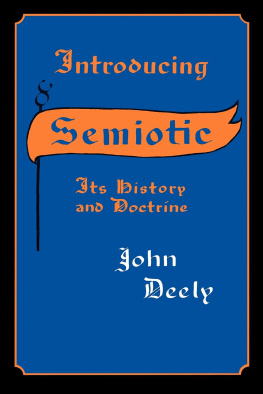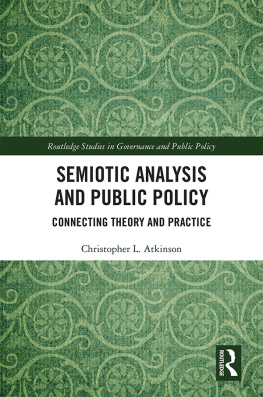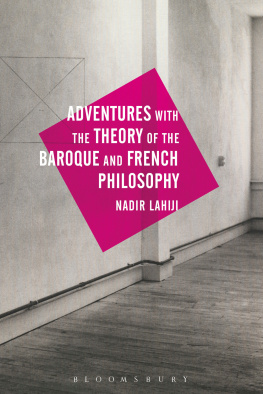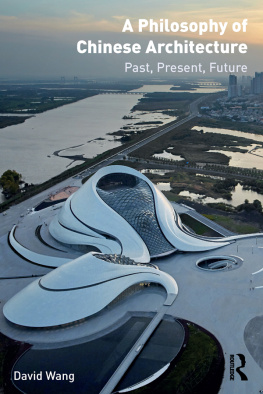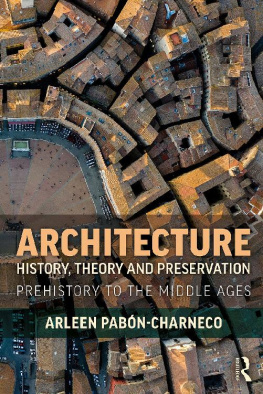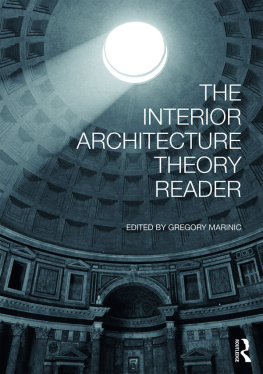Architecture in Black
Also Available From Bloomsbury
Aesthetics and Architecture, Edward Winters
Aesthetics: Key Concepts in Philosophy, Daniel Herwitz
Art, Myth and Society in Hegels Aesthetics, David James
The Missed Encounter of Radical Philosophy with Architecture, edited by Nadir Lahiji
Architecture in Black
Theory, Space, and Appearance
Darell Wayne Fields
With a Foreword by
Cornel West

To Kathleen and Jessie
Contents
Since the original publication of Architecture in Black, at the turn of the last century, a lot has changed. I acknowledge distant friends and estranged mentors. Most are mentioned, there, in the acknowledgments of the first edition. Becoming distant is a result, perhaps, of being bound to, and pulled apart by, our respective convictions. Regardless, I remain indebted to them all.
Unexpectedly, there are the new acquaintances. Those, unknown initially, who reach out offering opportunities that re-enliven the spirit. I am deeply indebted to CentralTrak, The University at Dallas Artists Residency, and its former Director, A. Kate Sheerin. Time spent during my residency (201011) allowed me to visualize the theory of the architecture in black project. The results of those reflections are published here for the first time. I also thank Colleen Coalter, Commissioning Editor of Philosophy at Bloomsbury Publishing, for her unexpected enquiry resulting in the publication of the second edition.
Finally, there are those who seem to have always been with us. Who, with the force of objective intellect, regardless of change, demand that we move forward along a principled path. To her, Kathleen Fields, I dedicate the entirety of this work as a demonstration of my ongoing efforts, with her guidance, to do just that.
Theory is a bottle sent. Architecture in Black(1), the first edition, interprets the relationship between architecture and blackness. It is also a vessel containing an idea. The idea, suggested throughout the text, rarely comes into focus. It is the consequence of analyzing the dialectical motives of history, revealing an underlying spatial play of complex semiotic structures. Indeed, the literary (theoretical) descriptions of dialectic and semiotic structures are complex because they depict, indirectly, multivalent spatial compositions. In other words, the complex syntax of dialectical constructions, for example, is the result of dynamic, spatial thinking.
Being certain, in writing the first edition, that my architectural training was causing me to see things, I was careful not to divulge the spatial idea for fear it might be perceived as analogous versus an essence of dialectics and semiotics. Most intriguing was the realization that the philosophers, historians, and semioticians encountered, in writing their respective theories, do so unaware of the spatial dependencies of their texts.
These spatial fascinations are suspended, but not suppressed, in Architecture in Black(1). While I could think the idea, I had no theory to express it. Like water held in a vase, there was no container to push back against these fluid thoughts to give them form. Ironically (and frustratingly), I was composing that theory at the time. I reasoned, however, that while I could not give a comprehensive literary voice to this new spatial subject, I had any number of ways to write around it.
The first utterance of architecture in black is a precise example of black semiotic production (creativity) based on black literary theory. As with any vessel, it is a thing unto itself. Having its own internal curiosities, characteristics, and logics, it stands on its own. Its existence as theory, however, is not its purpose. Until put to use, it remains empty. The real objective is conveyed and concealed by the perception of the texts in black provocation. The first appearance is racial, foreshadowing the proactive and constructive critique of conventional architectural theories through the use of black semiotic techniques.
The second appearance of in black forms the basis for the second edition. Its appearance is literal. It is, however, a formulation full of ambiguity and difficult to grasp. It suggests a rich, formal, spatial logic within blackness. This second editions loop back to the firsts arrangement of architectural theory and black semiotic structures is intended, above everything else, to demonstrate a choreographed series of spatial movesmoves necessary in exploring, beyond cultural racial motifs, the full-blown black spatial syntax based on three interrelated concepts: (1) isolation (autonomy), (2) timing, and (3) projection.
Darell Fieldss pioneering book is the first theoretical treatment of race in architectural discourse. This bold effort raises three fundamental questions ignored by contemporary theoristsespecially postmodern thinkers and poststructuralist critics. First, Fields rightly understands that the historical weight of race in modern philosophical discourse must be taken seriouslynot simply acknowledged and condemned. So the initial question is: How do we understand the variety of effects and consequences produced by canonical philosophical figures such as Hegel and Saussure on present-day discourses purportedly so preoccupied with difference, otherness, and alterity?
The glaring evasion of race in postmodern thoughtwhether by Jameson, Harvey, or Lyotardreveals the historical conditionedness and professional situatedness of late twentieth-century professors who theorize. Therefore, Fields is compelled to till his own ground and lay bare the terrain for his theoretical project on architecture and blackness. This work takes the form of a careful textual genealogy of the construct of Africa and race in modern philosophical discourse. Needless to say, this historical excavation is a highly selective one that enables Fields to highlight the architectural dimensions of his major figures. His fascinating interpretations have immense implications for our understanding of modern art, aesthetics, and architecture.
The second question has to do with the intellectual resources of modern philosophical discoursesnamely, what are the ways in which countervailing and counterhegemonic forces within these discourses can be constructed and brought to bear against the dominant racist formulations of these discourses? Does the silence on race in postmodern theory bespeak a tacit acknowledgment of the paucity of such antiracist forces? By antiracist, we are alluding here to theoretical moves within the discourses that dismantle white supremacist assumptions, not moralistic gestures or political programs of antiracism. This question is disturbing because such gestures and programs, though well intended and of goodwill, may reproduce basic racist presuppositions and perceptions of modern and postmodern theory. It also raises the terrifying possibility that theoretical discourses in the modern West, at their deepest levels, are too mired in racist soil to do theoretical justice to black humanity and grasp in a serious manner the complexity of black life.
The first two questions are critical in character and historical in content. Any serious wrestlingas in Fieldss textwith either question is a breakthrough. Yet Fields refuses to remain confined to the critical mode.
He forges ahead to virgin soil in architectural theorya constructive effort to constitute an indigenous (yet hybrid) black tradition of cultural practices that may inform and inspire a distinctive architectural discourse. As a result, the third question arising from Fieldss critique of historicity is a textual (and real) struggle that is fundamentally black, aesthetic, and architectural.
Next page


